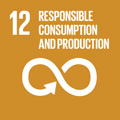- Docente: Luca Piancastelli
- Credits: 6
- SSD: ING-IND/15
- Language: English
- Teaching Mode: Traditional lectures
- Campus: Forli
-
Corso:
Second cycle degree programme (LM) in
Aerospace Engineering (cod. 5723)
Also valid for Second cycle degree programme (LM) in Aerospace Engineering (cod. 5723)
Learning outcomes
The student gains a clear understanding of the design process used in the aerospace industry to develop new products. In detail, the student knows the proper methodologies to carry out a synthetic approach to the design of new vehicles, focusing the attention on the conceptual and preliminary design methods and tools useful for the aeronautical products development.
Course contents
-Definition of the modern design process contextualized to the aircraft project.
-The tasks of the designer.
-The organization of the documentation and the construction concept.
-The software currently available.
-Possibility of available software (CAE, CFD, FEA ....)
-General classification of the types of machines: customer expectations and specifications. The preliminary negotiation and the analysis of the specifications.
-Hints of aircraft technical history with examples of solutions
-Trouble shooting by examples
- Preliminary modeling.
- Outsourcing.
-Practical aerodynamics and applied CFD.
-The propulsion, its installation and the CFD.
-The analysis of the components and their functions with particular attention to weight
-Preliminary design techniques.
-Project evaluation techniques.
- Cost evaluation techniques.
-The evaluation of the overall reliability.
-The planning of the maintenance process and a preliminary cost estimate.
- Reliability estimates of the preliminary design.
Readings/Bibliography
Aircraft Design: A Conceptual Approach, Sixth Edition
Daniel Raymer
ISBN (print): 978-1-62410-490-9
Publication Date: September 30, 2018
NASA RP 1060
Subsonic aircraft: evolution and the matching of size to performance
Laurence K. Loftin jr.
1980
Teaching methods
The teaching consists of lectures and a project that is assigned to the individual student or to a group depending on the teaching situation. Periodically, the student / group goes to the teacher who checks the progress of the project and suggests any improvements and corrections.
Assessment methods
The end-of-course exam aims to assess the achievement of educational objectives:
- Knowledge of the design process
- Knowledge of the main CAD / CAE design tools
- Knowledge of the main validation criteria of a project,
through an oral test, on two specific questions on topics related to the main objectives of the course and on the evaluation of the individual / group project.
Teaching tools
The teaching material used in class will be made available to the student in electronic format.
Office hours
See the website of Luca Piancastelli
SDGs


This teaching activity contributes to the achievement of the Sustainable Development Goals of the UN 2030 Agenda.
